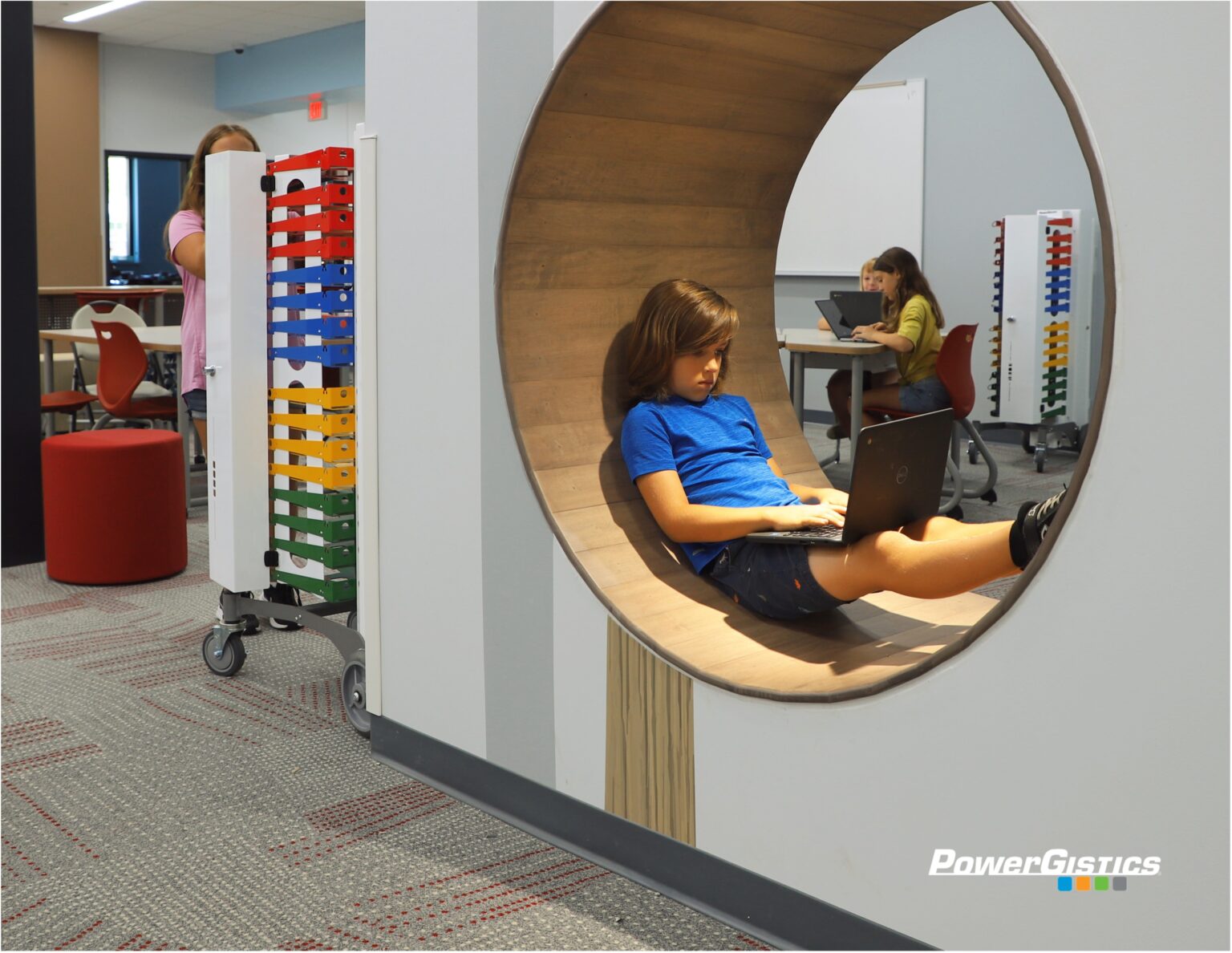Empowering Students with Strategic Charging Solutions
While charging carts and charging stations are often an afterthought in many district budgets they are a surprisingly important contributor to time-on-instruction, classroom management, and a well-managed IT budget. Recognizing that high-quality charging stations are an investment ultimately results in increased teacher and student satisfaction and educational outcomes, and should be an important consideration in any device management plan.
Understanding the Purpose of Charging Carts
The common misconception is that charging carts only serve one purpose: to charge devices. However, charging carts are essential for organizing, protecting, and maintaining a devices educational impact. Viewing charging carts as a commodity and choosing the cheapest option may, indeed, save money in the short term but will likely not meet all the necessary criteria for effective use in schools.
Material Matters: Steel vs. Aluminum
Surprisingly, many budget-friendly charging carts are made of steel, which is less expensive, but not ideal for dissipating heat. Aluminum, on the other hand, naturally dissipates heat and helps maintain a safer temperature for devices. Choosing aluminum can prevent premature device loss caused by overheating in steel enclosures.
Device Orientation and Usability
Cheaper charging carts often stack devices vertically, similar to dishes in a dish rack. While this design minimizes the cart’s footprint, it can create access issues for students and complicate cable management. Proper orientation and easy access to devices are crucial for ensuring that students can independently manage their devices without teacher intervention, saving valuable learning time, while putting less stress on charging cables minimizes maintenance headaches.
Aligning Charging Solutions with Educational Goals
Effective charging carts support the goal of assigning devices on a 1:1 basis by ensuring organized and accountable management of devices and cables. Disorganized carts can lead to accidental or intentional damage, and hinder the development of responsible device care habits among students. By prioritizing quality charging solutions, districts can foster a culture of responsibility and proper technology use.
Encouraging Technology Use Through Practical Design
Investing in user-friendly charging carts can significantly enhance both teacher and student experiences. When retrieving and returning devices is simple and efficient, it encourages consistent use of technology in the classroom. This leads to better integration of digital tools in teaching and learning processes.
Supporting Local Economies
Choosing charging carts manufactured domestically supports local economies and aligns with initiatives to strengthen American manufacturing. High-quality charging stations made in the USA, such as those from PowerGistics, not only ensure better product standards but also contribute to the economy by providing jobs and supporting local industries.
Making an Informed Choice
Selecting the right charging cart is about more than just price—it’s about ensuring the longevity, usability, and proper management of educational devices. PowerGistics offers high-quality, American-made aluminum charging stations designed with students in mind. Investing in superior charging solutions reflects a commitment to enhancing educational experiences and fostering responsible technology use.
By making informed decisions about charging carts, districts can ensure that they support both their educational goals and their broader economic responsibilities. Choose wisely to ensure that technology remains a powerful tool for learning in your district.
To learn more about effectively deploying and managing devices in the classroom, we encourage you to enroll in the free certificate program “K12 Device Deployment and Classroom Models – Tips and Challenges” offered by K12Leaders. This comprehensive program covers assessment, technology setup, device charging, take-home models, classroom communities, and implementation strategies to help you maximize the impact of technology in your district.
About the author:
Christine Nelson helps K-12 Districts across the United States and Canada align their Chromebook, iPad, and laptop charging station infrastructure with their district’s technology and learning goals. She has been in this role at PowerGistics since 2019.







